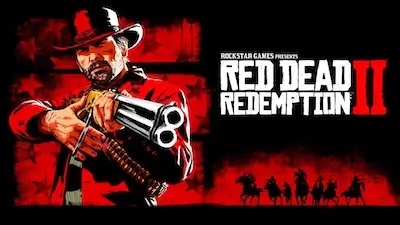The evolution of storytelling in video games has transformed how players engage with narratives. From simple text-based adventures to complex immersive experiences, the journey of video game storytelling is remarkable.
Today, we see titles that blend interactive storytelling with emotional depth, creating unforgettable experiences.
TL;DR – Gaming Evolution Guide: How Storytelling in Video Games Became Immersive and Player-Driven
- Video game storytelling evolved from simple text adventures to emotionally rich, player-driven experiences.
- Forking-path narratives, inspired by Borges and hypertext fiction, laid the foundation for choice-based gameplay.
- Modern games like The Witcher 3, The Last of Us, and Red Dead Redemption 2 blend gameplay with emotional storytelling.
- Morality systems and branching dialogue paths create personalized player experiences with multiple endings.
- Expert creators like Kojima, Druckmann, and Levine emphasize emotional impact and interactivity as the future of narrative design.
Gaming Evolution Guide: How Storytelling in Video Games Became Immersive and Player-Driven
The Table of Contents
Forking-Path Narrative: Echoes of Borges
In 1941, Argentine writer Jorge Luis Borges created a story called "The Garden of Forking Paths." In it, he explored the idea that every choice people make can lead to different results.
Today, this idea has come true in video games. Players can make choices that greatly affect the story. The idea of forking-path games, often called "interactive fiction," is now an important part of how stories are told in video games.
story. The idea of forking-path games, often called "interactive fiction," is now an important part of how stories are told in video games.
From early text games like Zork to today's complex RPGs, video games have used this format. This lets players follow different story paths.
In the 1980s, the rise of hypertext fiction heralded the potential for variable endings and branching storylines. Games such as Metroid and Nobunaga's Ambition II demonstrated this shift by offering players multiple endings based on their decisions.
The Game Book Genre's Influence
The 1980s also experienced the boom of the print game book genre, which introduced readers to the concept of choice-based narratives. Popular series such as Choose Your Own Adventure and Fighting Fantasy have helped shape video games that focus on player choices.
As we transitioned into the 90s and beyond, video games became the definitive platform for forking-path storytelling.
Interactive Storytelling
Modern games from companies like BioWare and others have expanded the way stories are told by allowing players to make choices. Games like "Cyberpunk 2077" from CD Projekt Red and "The Outer Worlds" from Obsidian Entertainment have joined this trend.
"The Outer Worlds" from Obsidian Entertainment have joined this trend.
Both games feature intricate dialogue systems that allow players to make meaningful choices that impact the story and character relationships. "
"Cyberpunk 2077" offers a large open world where your choices can change many things. These choices can influence the story and the fates of different characters.
These games show how player choices can change the story, making the experience more personal.
The Quest for Multiple Endings
The capacity for games to feature a multitude of endings has expanded dramatically. For instance, Star Ocean Second Evolution boasted approximately 100 endings, while Until Dawn showcased an astounding 256. This variety lets players explore different parts of the story, making each playthrough special.
making each playthrough special.
Games like Heavy Rain show that players' choices can lead to very different results. Sometimes, these choices can even take important characters out of the story while the main plot stays the same.
This emphasis on player agency highlights the engagement players feel with forking-path narratives. Fans often have strong opinions about game endings, such as in Mass Effect 3.
This shows how much players care about the choices they make in these game worlds.
Embracing Interactive Media
Video games have a unique ability to demonstrate the consequences of karma and morality systems in ways that engage players deeply. Video Games can do this in ways that books and movies often cannot. Gaming lets players see how their choices create different results.
This makes decisions important and relevant. As we continue to explore the world of interactive media, video games provide a unique way for stories to develop through player participation.
What the experts are saying about Interactive Storytelling:
-
Jason Schreier (Video Game Journalist): "Today’s games offer deep stories that can make players feel emotions like those found in movies and books. They pull players into the story and make them feel like they are part of it."
-
Hideo Kojima - The Creator of the Metal Gear Series (Game Designer and Director) said, "Video games are a new way for people to interact with stories. The future is about making players not only see the story but also live it."
-
Neil Druckmann, the Creative Director at Naughty Dog, said, "We want to create experiences that connect with players' feelings. It's about taking them on a journey they'll remember even after they stop playing."
-
Amy Hennig, a game director and writer, believes that video games allow us to tell stories that connect with players on a personal level. In these games, players feel involved with the characters and the choices they make.
-
Ken Levine, the creator of Bioshock, explains, "We aim to create an emotional experience. We want players to feel different emotions based on the choices they make."
The Best Storytelling Video Games
While there are countless video games with excellent storytelling, some stand out for their innovative narratives and memorable experiences.
These games have created high standards in storytelling, giving players memorable stories that have changed the gaming world.
"The Last of Us": A Masterclass in Emotional Storytelling
Developed by Naughty Dog, "The Last of Us" is a post-apocalyptic action-adventure game that follows the journey of Joel and Ellie as they navigate a world ravaged by a fungal infection.
The game is praised for its emotional storytelling and complex characters, making it a standout example of narrative-driven gaming.
game is praised for its emotional storytelling and complex characters, making it a standout example of narrative-driven gaming.
The narrative of "The Last of Us" explores themes of survival, loss, and the human condition, drawing players into a deeply emotional journey.
The complex relationship between Joel and Ellie is at the heart of the story, offering players a nuanced exploration of love and sacrifice.
The game's ability to evoke powerful emotions and create an immersive world has cemented its place as a masterpiece of video game storytelling.
"Red Dead Redemption 2": An Epic Tale of the American Frontier
Rockstar Games' "Red Dead Redemption 2" is an open-world action-adventure western themed video game set in the late 1800s. The game features a rich, immersive narrative that explores themes of loyalty, morality, and the cost of survival.
themes of loyalty, morality, and the cost of survival.
Its storytelling is complemented by stunning visuals and a detailed world that players can explore.
The narrative of "Red Dead Redemption 2" is an epic tale of the American frontier, offering players a sprawling story filled with memorable characters and moral dilemmas.
The game's open-world design lets players explore the story at their own speed, making each experience unique.
The mix of a strong story and a detailed world makes "Red Dead Redemption 2" is a great example of one of the best storytelling video games.
"The Witcher 3: Wild Hunt": A Story of Monsters and Men
"The Witcher 3: Wild Hunt" is an open-world role-playing game made by CD Projekt Red. It tells the story of Geralt of Rivia, a monster hunter who is looking for his adopted daughter.
The game is renowned for its intricate storytelling, complex characters, and moral choices that affect the game's outcome.
The story of "The Witcher 3" is made up of many linked tales. It gives players a world full of political drama, personal journeys, and tough choices.
The game's branching storylines and decision-making mechanics allow players to shape the narrative, creating a deeply personal and engaging experience. The storytelling prowess of "The Witcher 3" has earned it critical acclaim and a lasting legacy in the gaming industry.
Gaming Points of View: Different Perspectives on Narrative Engagement
One interesting part of storytelling in video games is how it changes depending on the player's perspective. Each player brings their own experiences, feelings, and expectations to the game, which influences their interaction with the narrative.
In games like "The Witcher 3," players see Geralt's choices in different ways. Some players care more about the right and wrong of his actions, while others think about what he can gain for himself. This divergence highlights the interactive nature of storytelling, where choices resonate differently depending on a player's unique perspective.
As we explore stories in video games, it's essential to recognize how gaming points of view enrich the experience, allowing diverse interpretations of the same narrative. This multiplicity of perspectives not only enhances player engagement but also stimulates discussions among communities, fostering a shared passion for storytelling within the medium.
The Retro Wrap Up
Video games and storytelling go well together. They blend narrative and interactivity to create experiences that stick with players even after the game is over.
- As technology keeps improving, the future of storytelling in video games offers many exciting p
- ossibilities. We can expect even more engaging and immersive stories.
- In the evolving world of video games, storytelling will keep becoming more important.
- Players will find new ways to connect with stories and characters that were not possible before.
- As we consider the future, it's evident that video games will continue to be a strong tool for storytelling, engaging players globally.
The combination of storytelling and video games will keep advancing narrative design, providing players with experiences that are both emotionally impactful and captivating.
Check us Out & We'd Love to Hear From You
- What are some of your favorite storytelling video games? Do you have a specific moment or decision that impacted you deeply?
- Share your experiences in the comments below!
- Are there any lesser-known games you think deserve more attention for their storytelling?
- Recommend them below, and let’s help each other discover new gaming experiences!
Related: Explore our guide to selling used video games online — and turn your collection into cash!
Frequenlty Asked Questions:
How is storytelling used in video games?
- Storytelling in video games is used to engage players through plot, characters, and choices that impact the gameplay experience.
What is storytelling in video games?
- It’s the narrative structure within a game that guides players through a story using dialogue, cutscenes, and gameplay.
How to become a video game narrative designer?
- Study writing or game design, build a portfolio, and gain experience creating interactive stories in games or mods.
What is The Last of Us about?
- It’s a post-apocalyptic story about Joel and Ellie’s journey for survival and emotional connection in a ruined world.
Can The Last of Us happen?
- While based on real fungi, a Cordyceps-like outbreak affecting humans is highly unlikely with current science.
What is social systems morality?
- It refers to how a game models ethical choices and social consequences through player actions and character interactions.
What is Red Dead Redemption 2 about?
- It’s about Arthur Morgan’s struggle with loyalty, survival, and redemption in the fading days of the American frontier.
Is The Witcher 3 bigger than Skyrim?
- Yes, The Witcher 3 has a larger map and more detailed questlines, though both offer vast open-world experiences.








